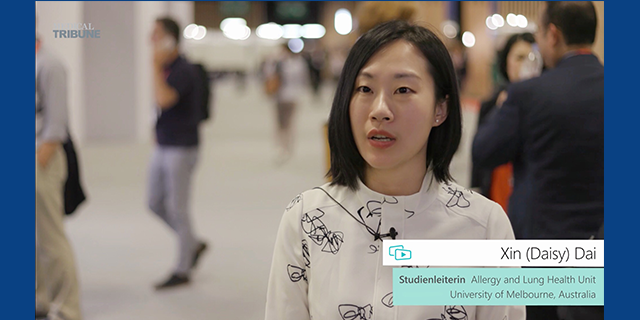Paracetamol use in infancy is linked to higher asthma risk in some teenagers
“Children who take paracetamol during their first 2 years of life may be at a higher risk of adverse respiratory effects including asthma and reduced lung function by the age of 18, especially if they have particular gene variants”, this conclusion, based on results of analysis of the Melbourne Atopy Cohort Study (MACS), was presented at the International Congress of the European Respiratory Society (ERS), in Paris, France from September 15-19.

This research attracted public attention and was reported by major media outlets including the Daily Mail, the Times, the Telegraph, the Sun and the Australian. Ms. Dai was interviewed by media representatives from France, Germany, Belgium and Finland regarding the research and its implications.
Xin (Daisy) Dai, RN, a PhD candidate, of the Allergy and Lung Health Unit, School of Population and Global Health, University of Melbourne, Australia, explained in an ERS press conference: “GST genes link an important antioxidant called glutathione and toxins to stop cellular damage from these toxins. When paracetamol is processed in the body, one of the byproducts is a toxic metabolite which is also detoxified using glutathione and GST enzymes, reducing the body’s capacity to deal concurrently with other toxic exposures, for example toxic metabolites from lung infection”, therefore “we hypothesized that people who did not have full GST enzyme activity because of common genetic variations or deletions may be more susceptible to adverse effects on the lung from paracetamol use.”
Ms. Dai and her principal supervisor Dr. Caroline Lodge tested their hypothesis in 620 children who had been followed from birth to 18 years of age as part of the MACS. “We found that children with the GSTP1 Ile/Ile variant were at 1.8 times higher risk of developing asthma by the age of 18 years if they were exposed to more paracetamol compared to children who were less exposed in the first two years of life,” said Ms. Dai. “In contrast, increasing paracetamol exposure in children who had other types of GSTP1 did not alter their risk of asthma.”
She noted that “We also found that in children with GSTM1 null genotypes, increasing paracetamol use was associated with a small but significant reduction in lung function at 18 years.
She concluded, “our findings provided more evidence that paracetamol use in infancy may be associated with adverse respiratory effects for children with particular genetic profiles”.